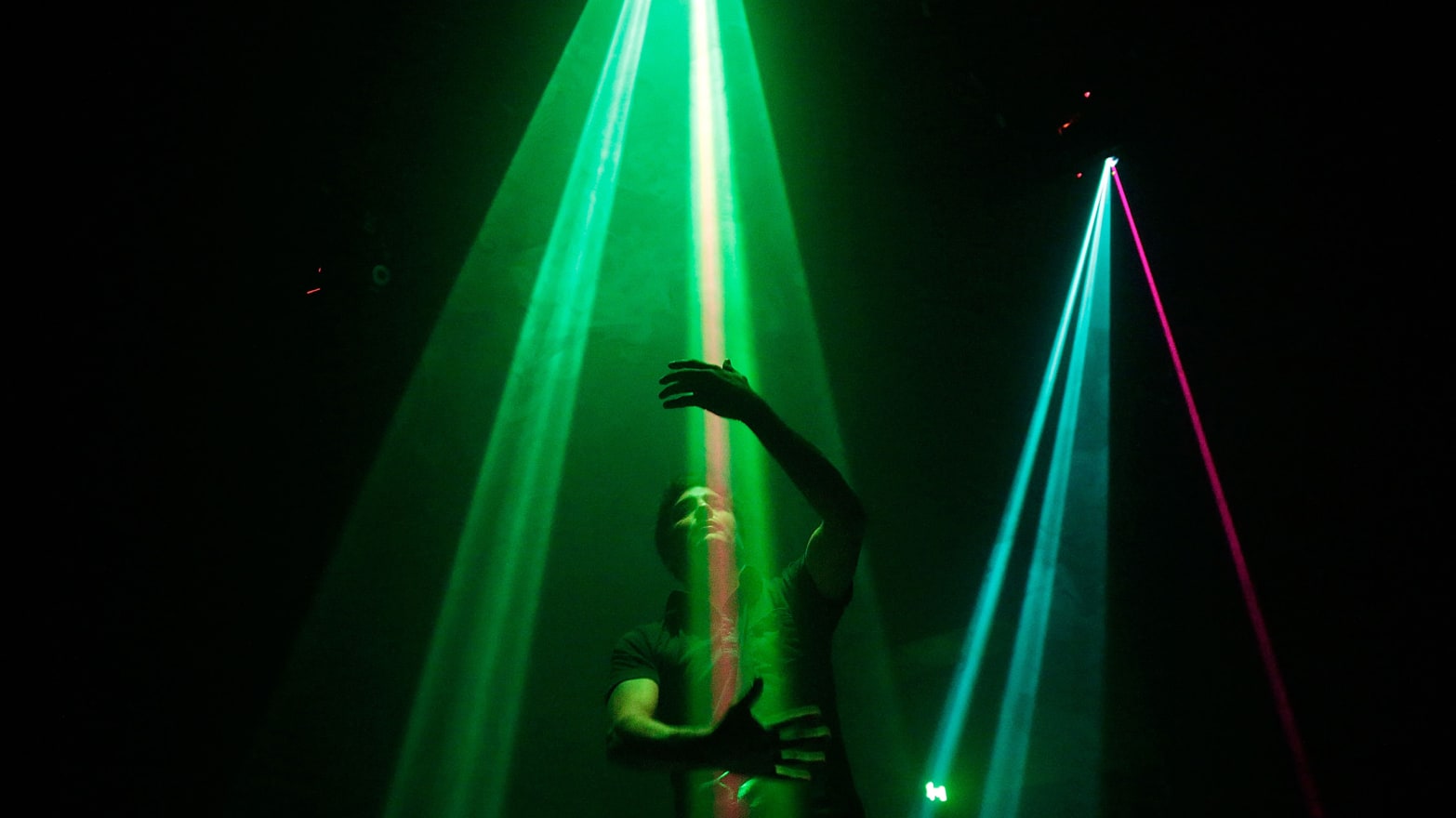Want to shoot lasers from your eyes, or see wings sprout from your arms? Good news: The future of digital design has arrived, and it is seriously cool.
An arcade game that you control using only your brainwaves and eyes is one of the extraordinary firsts debuting at the Digital Revolution exhibition in London. By placing your forehead against two electrodes, you can control the power of on-screen laser beams using the electrical activity in your brain and then direct them at a horde of onrushing robots by moving your eyes. This extraordinary creation is part of a show tracking 50 years of digital progress.
Another installation commissioned by DevArt, a Google enterprise, allows people to transform themselves into giant stick figures, while the most enjoyable artwork is a huge interactive video triptych, which is like stepping into Alfred Hitchcock’s horror classic The Birds. As you walk in front of the first screen, your silhouette appears and birds swoop down toward you. At first you can shoo them away with your arms, but that’s no longer the case in the second pane, where the birds descend ever more vigorously, pecking at your moving silhouette until it has been eaten away to nothing.
In the third video panel of Chris Milk’s The Treachery of Sanctuary, you are reborn. If you flap your arms hard enough, a pair of vast feathered wings appears to grow out from your shoulders.
Conrad Bodman, curator of the exhibition at the Barbican Centre, told The Daily Beast that these exhibits were the work of an entirely new breed of artist. “It’s really focusing on creative people who work with code as a medium—it’s their paint or wood or stone,” he said.
The curators argue that coding has brought about as radical a transformation in the art world as the printing presses did in the 15th century. This show offers a welcome and dazzling glimpse into that new world.
Some of the pre-eminent innovators at the intersection of art and coding are based at the Aesthetics and Computation Group at MIT. What better way to explore their passion than through a kind of 21st-century documentary created by digital artist James George?
His extraordinary interactive feature allows you to manipulate images, moving around talking heads as they speak, so that you feel immersed in their world, seemingly in the room as they discuss their work.
George said coding and digital innovation were becoming basic artistic methods. “We’re at the point of tipping over into mainstream culture. There’s geeks and non-geeks coding. Using computers to communicate with your friends is not stigmatized like it was in the ’90s, when people had to be able to write code to get on the Internet,” he said.
“The community is much more balanced now—not everyone is trained as computer scientists. There are art historians, there are designers, there are people with a fine-art background, painters who’ve decided to start using code as a way to express themselves. We’ll soon have a much wider understanding of how code can be used. It’s not just about building apps and tools.”
The exhibition traces the history of digital art and design from games like Pong and the special effects in the movie Terminator 2, to more complex innovation like the brainwave- and eyeball-controlled technology.
The mind-control fantasy was made real by a tech team working on ways to help a man with motor-neuron disease rediscover the ability to control his environment. The Not Impossible corporation devised a simple, cheap, ocular tracking system to allow a graffiti artist with a degenerative disease to draw again—simply by moving his eyes. When TemptOne’s condition worsened and he was no longer able to blink fast enough to operate the on/off function, the team was forced to find a new “switch.”
By measuring the brainwaves generated when Tempt thought about switching the device on, they were able to create a trigger that would switch the machine on whenever the electrodes measured that same pattern of electrical activity. Tempt’s new and improved device is being fitted inside a Los Angeles Dodgers baseball cap, because there’s no reason for style to suffer.
The laser shooting game uses the same processes. The harder you concentrate on the screen, the more electrical activity in the brain, which tells the computer to increase the power of the laser beam.
Elliot Kotek, co-founder of Not Impossible, said the growth in the number of people with technological skills and coding meant it was getting easier for individuals or small companies to devise great innovations. “We’re not Bill Gates, we’re not the U.N. What we want to show is that everyone can help someone,” he said.

